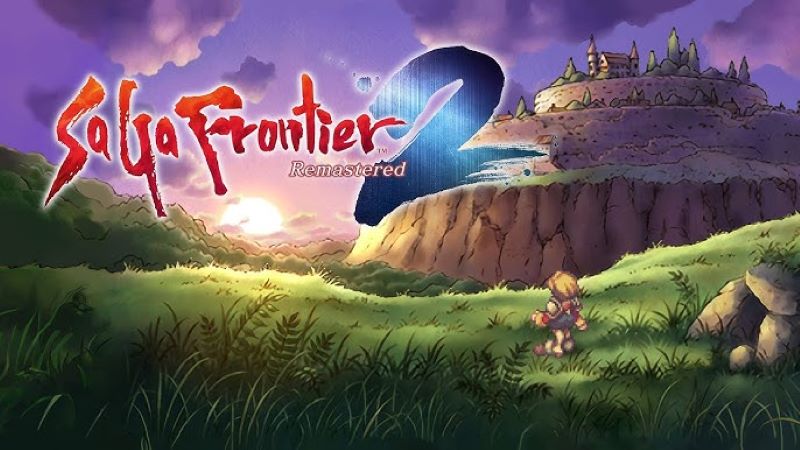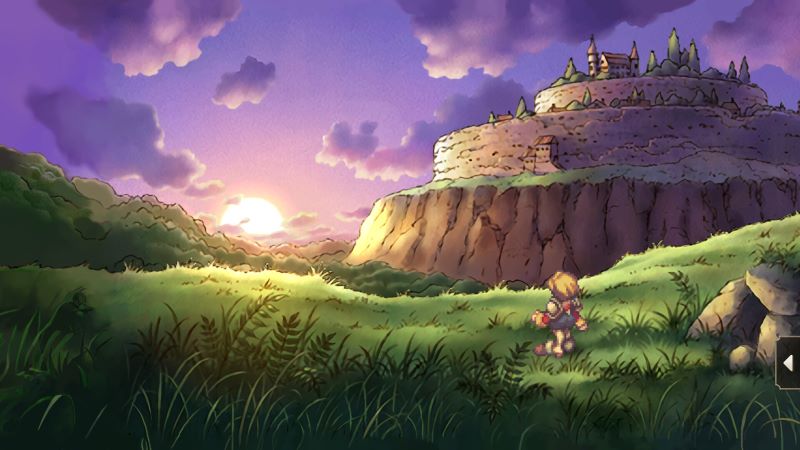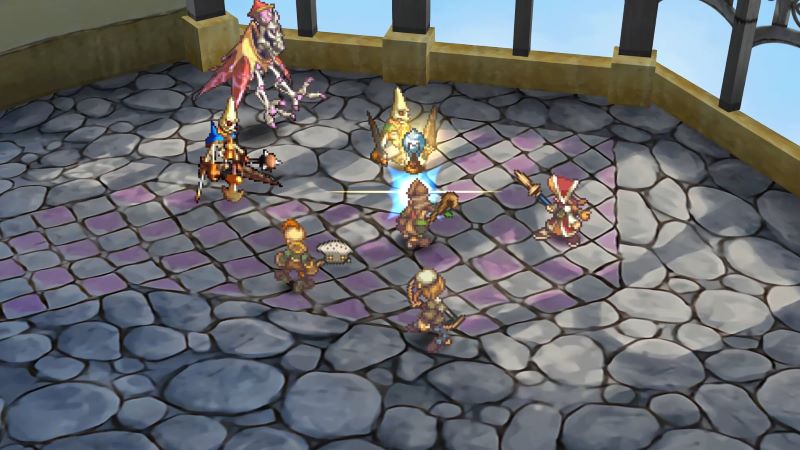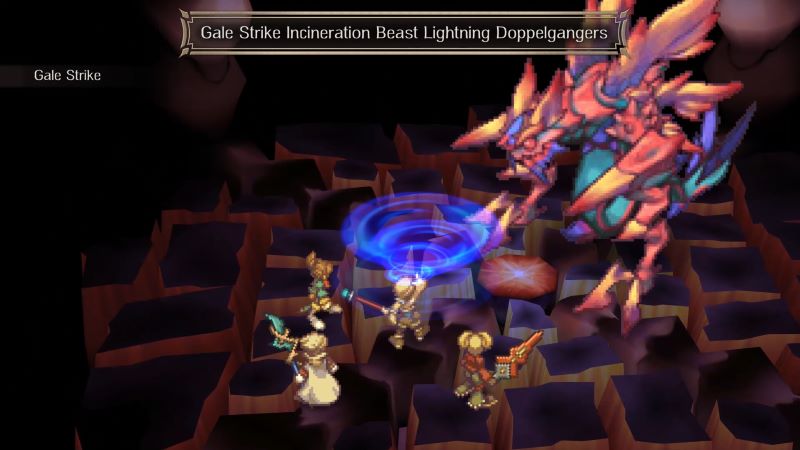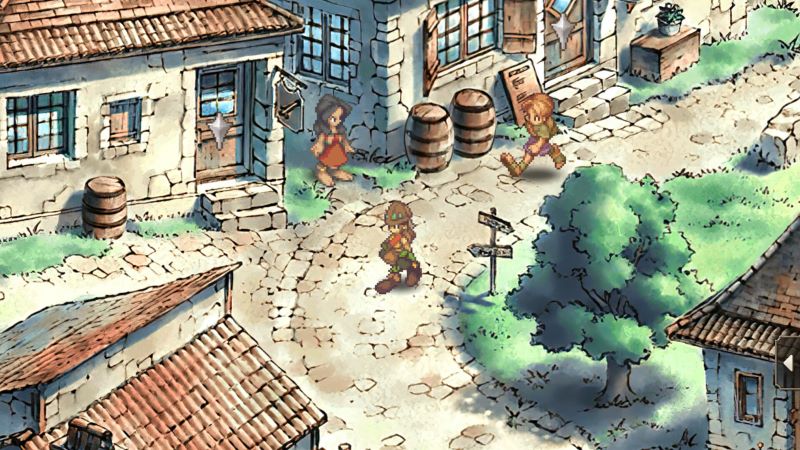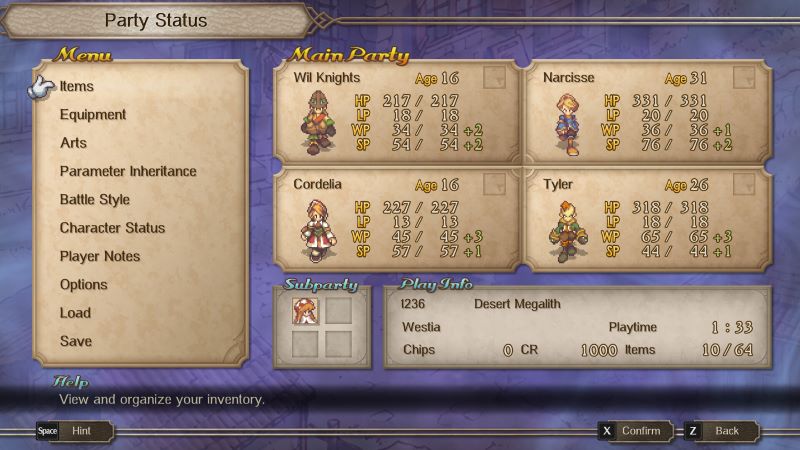SaGa Frontier 2: Remastered PS5 Review. The SaGa franchise has had a massive resurgence from Square Enix these last two console generations, with the publisher having remastered and re-released almost every game in the mainline franchise and its spin-offs. It’s great to see the company bringing so many of their classic franchises back, and SaGa Frontier 2 is one of those that may have gone under the radar when it originally released on the PSOne.
SaGa Frontier 2: Remastered PS5 Review
A Story Spanning Entire Lifetimes
SaGa Frontier 2 tells two stories about two vastly different characters and how their stories eventually connect. You can start your adventure with Gustave, a young prince exiled with his mother after he shows no magical powers or (Anima).
Gustav’s story follows him through his young age and eventual adulthood as he learns to rule and become strong through physical strength and cunning rather than Anima.
The other story follows a digger named Wll who looks to continue his family’s legacy of searching ruins to find treasure. Wll’s story and Gustav’s eventually crossover, but it’s not until their later years that they discover how they are connected. One of Square’s unique approaches at the time was telling the story of SaGa Frontier 2 through chapters depicting different years of each character. Gustav, for example, starts with his young child and follows his life events throughout his life.
An Intertwining Story
It’s not like regular RPGs where you play through a linear adventure. Instead, you select which event you want to witness or, in some cases, can even skip from the events menu.
These events won’t always have you battling foes, but some are there to move the story along and explain the things that lead to specific moments in the story.
You see Gustav learning to become a blacksmith and then watching his mother pass away four years after he learned to blacksmith. It’s a unique way of telling the story; some events can even be missed or skipped if you fancy doing so.
I’ll admit it’s not my favorite form of story, especially as some events can be missed entirely if you don’t follow specific interactions or switch over to Will when the time period allows.
Unique Combat That Forces You To Plan Ahead
This leads to the game’s combat and exploration. Combat was ahead of its time on the game’s original release, and implemented mechanics we saw in many games in the future. A key feature here is that characters don’t level up with experience points as you would expect.
Instead, everything is based on your gear, arts, and skills. Sure, after some battles you’ll gain more total health, but the bulk of combat involves equipping various weapons and having them level up, unlocking more skills for you to use.
Each party member has three main stats to consider. SP, MP, and LP. This is where the brutality of the game’s combat comes into play, and if you don’t manage these stats well, you will find yourself stuck and unable to finish not only battles and scenarios, but the actual game to boot.
Each art and skill in the game uses one of these three main stats. Depending on the weapon or armor you have equipped, you can recover these points after every attack. For example, an art may cost three SP, but you have a weapon that restores four SP after each turn, which means you will restore one SP after using this attack.
Think Before You Act
Understanding this system is life and death in SaGa Frontier, as outside of some chapters, where you can leave a dungeon and go back to an inn to restore your stats, there is no way to restore these points for most of the game.
What’s worse is that each character has to use one of these stats to heal. It is the only way to recover your party members, and once your points are depleted, there is no way to restore health outside of magic skills. As such, this means if you’re out of magic when you’re fighting the boss of a chapter for example, then chances are you won’t be finishing that boss fight or progressing in the game without restarting an older save.
Thankfully, the remaster has included a mechanic that allows you to carry over your weapon and magic stats and equip them with another character using Parameter Inheritance. This makes things a lot easier when you switch to Wll from Gustav and vice versa, as it allows you to grind away as much as possible before switching characters during events.
Gustav’s story has much less combat than Wll’s, and leveling up weapons and Magic in Wll’s story helps with the more difficult portions of Gustav’s story later on. Another combat mechanic is called Duals. When entering combat, sometimes you are given the option to choose one character to duel a monster, which is a great way to learn new art and Magic.
Overly Complicated Mechanics That Aren’t Explained
You choose a list of attacks, and the game then indicates with a combo icon, potentially allowing you to learn a new attack. After selecting up to four commands, you can then watch as the duel unfolds.Unfortunately, the game doesn’t explain this mechanic at all. However, it goes through the basic information about how it works. Duals are the only way to learn new Arts, but the game doesn’t actually tell you that.
The biggest folly that should have been addressed is the enemy scaling. If you move too far ahead in the story with Gustav, and then decide to go back and play the beginning of Wll’s story, the enemies that appear are scaled to the difficulty of where Gustav’s story is, rather than the earlier moments of Wll’s story.
When I tested to see if this was addressed, I essentially had to start playing the game from the start once again because enemies would simply kill Wll’s party with a single attack.
Helpful Improvements That Ease Along The Experience
This remaster welcomes some quality-of-life improvements. A double speed option during combat helps move things along faster, though it’s sometimes still tediously slow. Menus are faster and easier to navigate, and a quick save feature is available with a single button press.
SaGa Frontiers’ visual design remains outstanding, utilizing watercolor textures in its backgrounds and pixelated character models. Indeed, this was the biggest draw for the title when it was released on the PS1, and it remains so with the remaster. It looked stunning back then, and it seems even more spectacular now.
However, a minor issue I have is that I wish they had not blended chests to look more like the backgrounds, as they’re now much harder to locate than before. The soundtrack is also great, although we didn’t get a remastered soundtrack like other spruced up retro titles. It’s basically the original score, for better or worse, and there is now an option to listen to the soundtrack from the main menu.
A Brutal Under-The-Rader RPG
The remaster also adds some new scenarios that flesh out the secondary characters’ stories, which is a nice addition. A mini-game is included with the Japan-only version of the game that utilizes the PocketStation, and you can play with a virtual PocketStation.
SaGa Frontier 2 went under the radar for many people, but the franchise has recently become a priority for Square Enix. It’s great to see Frontier 2 finally get a remaster. However, for those who have never experienced the original game, be warned that it is one of the most unapologetic and brutal video game experiences you’ll play.
It’s so difficult that you may get to the final boss and realize that there is absolutely nothing you can do to win and have to restart a previous save if you managed to make a manual one, or may even have to restart the game completely.
Though it may not be very welcoming to newcomers, and many of its mechanics are not explained in the game, those who loved it in 2000 will still embrace it 25 years later.
SaGa Frontier 2 is now available for PS5 & PS4.
Review Code kindly provided by the publisher
